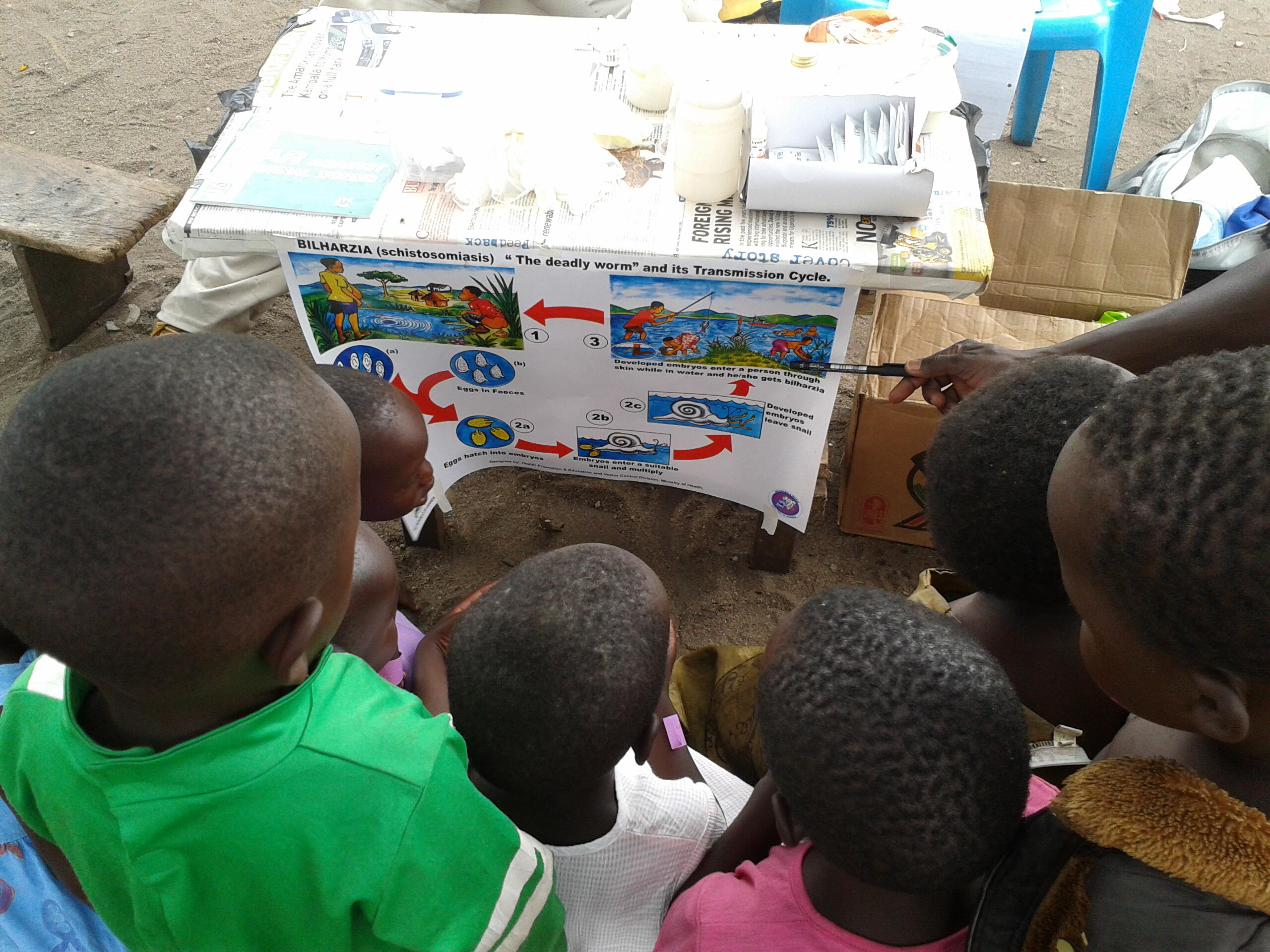
The continuing permanence of major neglected tropical diseases (NTDs) is leading to a revision of the related research agenda towards current and future control interventions and associated targets. In the journal Lancet Infectious Diseases, published 7 June 2016, LSTM’s Professors Louis Niessen and Russell Stothard argue for a broad research and implementation approach in an efficient and equitable upscaling of the control of schistosomiasis and soil-transmitted helminthiasis in Sub-Saharan Africa.
Set within a global strategy of preventive chemotherapy as endorsed by WHO, routine co-administration of the anthelminthics praziquantel (PZQ) and albendazole (ALB), by mass drug administration, is the frontline public health tool against schistosomiasis and soil-transmitted helminthiasis (STH), respectively. In 2012 several significant pledges and commitments made at the London Declaration on NTDs with an additional World Health Assembly (WHA) resolution 65.21 that called for intensification of efforts to better rally resources and to ensure an adequate provision of medications.
In their Comments Professors Niessen and Stothard give thoughtful support to a Stanford-based economics study on the situation in Sub-Saharan Africa by Nathan Lo and colleagues, published in the same journal, that demonstrates most strikingly that, if 20% of the entire population would shift to integrated treatment, fully dovetailing PZQ and ALB treatments, programme synergies would lead to a 40% reduction in implementation costs. Also, the study shows that annual preventive chemotherapy against schistosomiasis to be very likely cost-effective in treatment of school-aged children already at a prevalence of 5% (current guidelines state 50%) and of entire communities at 15% prevalence. Annual mass drug administration against STH is very likely cost-effective in treatment of school-aged children at a prevalence of 20% and for the entire community only as high as 60% prevalence, given uncertainties (95% UI: 35·3-85·1%). The authors estimate that treatment needs for Africa are six-fold higher than current guidelines for PZQ and two- fold higher for ALB.
Nathan Lo, the leading scientist, from Stanford University School of Medicine, said: “This editorial provides a clear vision on how our study findings can be translated into the next stage of helminthiasis control and elimination. Their words are optimistic for what we can accomplish to address the disease burden of helminths, but also realistic with many suggestions on how to address the host of challenges in revision of treatment guidelines and scaling up of treatment programmes."
Niessen and Stothard argue that the consequences for country programming are immense. The involved total budgets and other investments needed will be substantial, a major undertaking, given the limited resources in other priority areas within the NTD programmes and other health issues. In all scenarios, increased drug subsidies, and donations from pharmaceutical companies, strong political will, increased logistical support and improved epidemiological surveillance to monitor for drug resistance are needed. Although treatment expansion is now shown both financially and geographically appealing, Professor Niessen and colleague point out that extension of coverage is also justified ethically. At lower prevalence levels the at-risk vulnerable populations may be living in poverty and be harder to reach and lower compliance will lead to less returns. Extra effort and resources needed in the national process to improve the quality of the existing expanded MDA programmes in all places. Professor Stothard emphasizes that strategies need to be in place to ensure that treatment fatigue within the community does not dampen the recipients’ compliance and that their demand for treatment continues to complement the donor landscape and health system.
Professor Niessen said: “In revising preventive chemotherapy guidelines based on these new estimates, broader quantitative and qualitative evidence should also be collected and incorporated and collected – such as through the LSTM-coordinated CouNTDown programme - to optimise the implementation of control campaigns, which may suffer low uptake. At least, these developments are new and essential steps in the promotion of universal access in prevention and treatment of neglected tropical diseases as also envisaged in the sustainable development goals.”